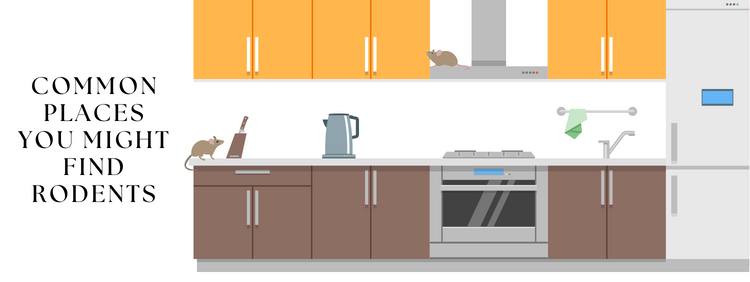Cambridge Pest Control Services: Common Places You Might Find Rodents

Many calls for rodent control services in Cambridge come during the fall and winter. Mice and rats do not hibernate, but they are susceptible to cold and need to find a warm place to take shelter, preferably close to food sources as these are also more difficult to find during the winter. Because rodents are small and adept at hiding, it is possible to have an infestation without knowing it. Here are some of the places you are likely to find them if they are present.
Crawl Spaces
Some homes, especially older homes, have a crawl space underneath instead of a basement. Crawl spaces are sometimes used in home construction to build on a slope without having to move as much dirt to level the grade. They are generally shorter than basements, typically about two feet tops, and are vented to the outside air. If the vents are not properly covered, rats and mice can easily get in through the spaces, even if they are very small. The air in the crawl space tends to be humid, which attracts rodents, and since humans cannot get into the crawlspace easily, it makes a good hiding place for rats and mice.
Not all homes have crawl spaces, but if yours does, it is a place where you are likely to find rats or mice if they are present.
Under Sinks
Mice and rats are attracted to small, dark spaces that are difficult for humans to access. The space under a sink is another example. The under-sink area can hold another attraction for rodents: water leaks. The amount of water that rats and mice have to drink depends on how much they are eating as they get a lot of their hydration from food. If they don’t find enough food to eat, they need to drink more water, and if they can get it from a leaky pipe, they are more likely to make a nest under the sink.
In Pantries or Kitchen Cabinets
Most animals try to make homes in areas where food is readily accessible, and rodents are no exception. If you store food in your cabinets or pantry in plastic bags or cardboard boxes, mice can easily chew through them. Sometimes they just forage for food in the cabinets and then nest elsewhere, but if the cabinet or pantry seems dark and safe enough, they may settle down inside.
Insulation
Rats and mice give birth to large litters of offspring several times a year. When first born, the babies are hairless and vulnerable. Mother mice look for soft, warm material to make a nest, and insulation fits the bill. Sometimes they tear up the insulation and bring it elsewhere to make a nest. However, because a wall void is also a dark, safe place that is inaccessible to humans, sometimes they just make a hole in the insulation for their nests. In either case, this can compromise the insulation’s ability to block cold air.
Furniture
Another place where rodents can find warm nesting sites is in furniture, especially overstuffed furniture with a lot of padding. Because of their sharp teeth and inherent need to gnaw, it is easy for rodents to chew through the upholstery and crawl right inside. Rats and mice are unlikely to make nests in furniture that is used often because they don’t want to get too close to humans, but if you have an unused piece of furniture in storage, it could become the site of a rodent nest.
Call Truly Nolen for Rodent Control Services in Cambridge
Our technicians perform a thorough inspection of your home to identify the nature of your pest problem and understand your individual needs. Learn more about all the pest control services we offer in Cambridge.